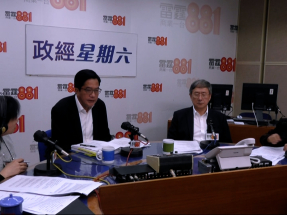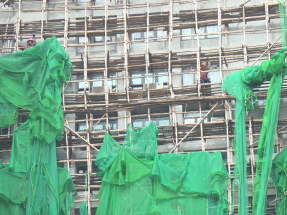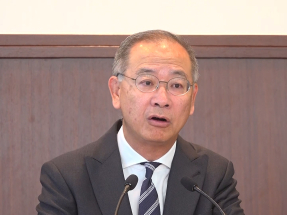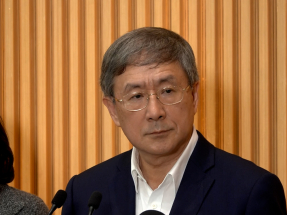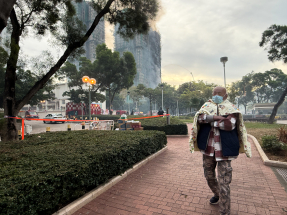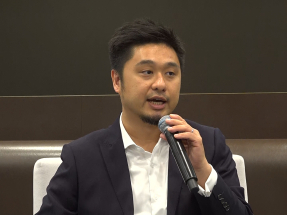Construction industry leaders on Thursday called on authorities to draw up legislation to make the use of fire-proof materials mandatory for construction and renovation work.
The calls came as the death toll for the ongoing fire at Wang Fuk Court in Tai Po rose to 55 since it broke out yesterday afternoon with flames ripping through bamboo scaffolding on seven out of eight residential blocks.
The eight blocks had been undergoing renovations since July 2024, sheathed in bamboo scaffolding and green nets.
Speaking on an RTHK radio show, Ho Ping-tak, chairman of the Kowloon and Hong Kong Scaffolding Workers Union, noted that there's a significant difference between nets with fire-proof particles and those without.
"For flame-retardant nets – taking nets of the size seen in the fire as an example, 18 metres by two metres – how much do they cost? It's about HK$75 to HK$90 per piece," he said.
"And if it's of the same size but without the fireproof performance, it will cost HK$40 to HK$50 per piece, so the price difference is quite significant, and thus provides an incentive to some people to take risks."
The scaffolding specialist also pointed to the lack of legislation on the mandatory use of fire-proof materials for construction companies, noting that while there are official guidelines, a lack of legislation might lead to malpractices.
Lee Kwong-sing, chairman of Hong Kong Institute of Safety Practitioner, urged authorities to set up legislation on this front.
"There's no law stipulating that flame-retardant materials must be used," he said.
"It is merely stated in the codes of practice by the Labour Department, so many people may not follow the requirements as it is not illegal.
"But if you turn such codes into a mandatory requirement – so it'll be against the law if they don't follow the codes – then that'll be another story altogether."
Lee also called for stronger supervision over people lighting up at construction and renovation sites, noting many contractors might not follow safety procedures.
"In the past, we often saw at maintenance sites that many workers, while working on exterior walls, held a lighted cigarette in their left hand and welding equipment in their right. Therefore, I think there is a great responsibility from a supervisory perspective," he said.
Lee also noted that he didn't think the blame should be levied on the use of bamboo scaffolding, saying it's not easy to set fire to bamboo and that metals could also catch fire, as seen in the case of electric vehicles.
Ho, the bamboo scaffolding specialist, noted that it's "not usual" for a contractor to renovate eight residential blocks at the same time.
"If you had separated the renovation works one by one, and divided them into different phases [for maintenance], the tragic situation like what we have seen in yesterday's 'chain of fire' might not have occurred," he said.
Electrical and building services engineer Ho Wing-ip expressed doubts over the necessity of using styrofoam boards to block the windows in the estate.
The comment came as authorities suspected that the flammable materials used to cover some windows at the estate might have been one of the causes of the fire.
“Actually, there are alternative materials which could be higher in cost but would be safer than foam board,” he told RTHK.












